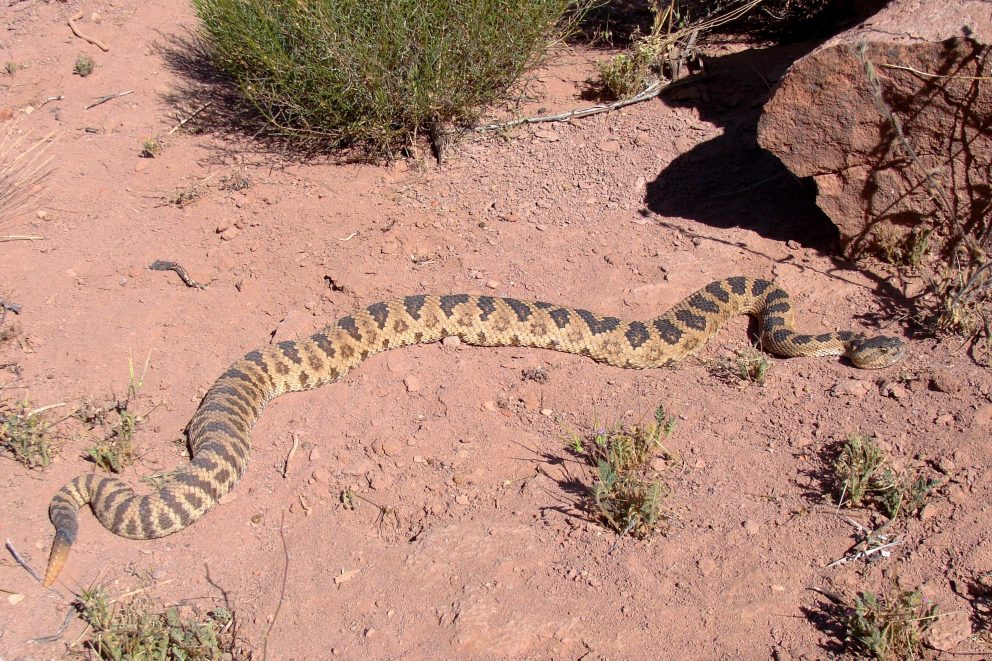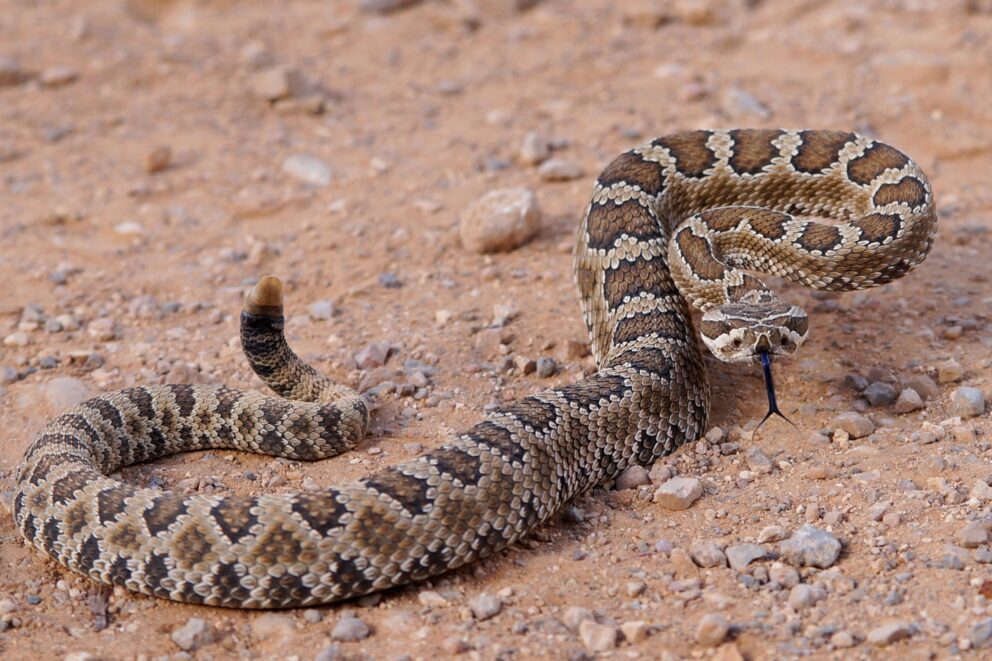- SCIENTIFIC NAME
- Crotalus oreganus lutosus
- CLASSIFICATION
- Reptile
- LIFE SPAN
- 10-20 Years
- STATE CONSERVATION STATUS
-
- Unprotected
- FEDERAL CONSERVATION STATUS
- Least Concern
- GAME STATUS
- Non-Game
- Washoe
- Humboldt
- Pershing
- Churchill
- Mineral
- Lyon
- Douglas
- Carson City
- Storey
- Elko
- Lander
- Eureka
- White Pine
- Esmeralda
- Nye
- Lincoln
- Clark
Habitat & Range
These snakes are found throughout all of Northern Nevada, and into parts of Southern Nevada. They are found in a variety of habitats including grassy, shrubby, and rocky areas.
- Cold desert shrubland and sagebrush
- Desert Washes
- Pinyon juniper forests
Threats
- Habitat Degradation
- Habitat Loss
Natural History
The Great Basin Rattlesnake is a pit viper and is venomous. It injects its toxins into its prey using long, sharp fangs. These snakes are ambush predators and will sit and wait for their preferred prey to come across their path before making the move to strike. Their preferred prey includes birds, lizards, other snakes, and small mammals.
Like other rattlesnakes, the Great Basin Rattlesnake gives birth to live young. They will have between 4 and 12 in their litter. Once the snakes are born they will not receive any parental care.
Fun Facts
This snake is often confused with the Gopher Snake. The Gopher Snake has a much skinnier body, and lacks the wide head and narrow neck of the Great Basin Rattlesnake.














